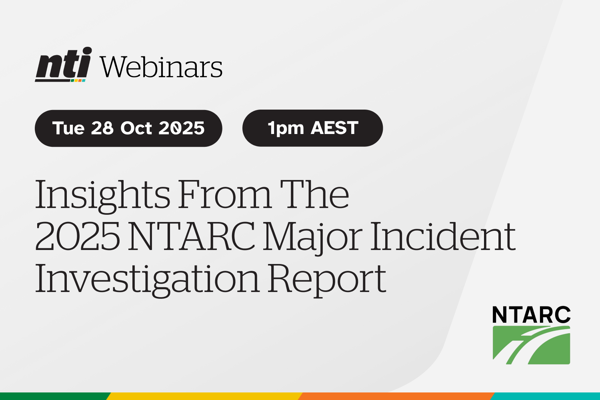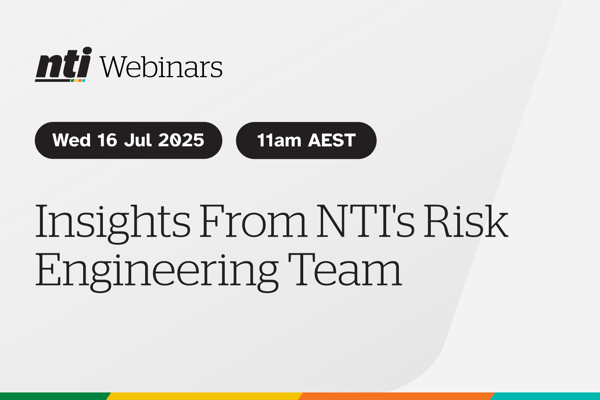
NTI is here to help
At NTI, we see risk engineering as a way to strengthen performance, not just tick boxes. Our risk engineers are more than safety specialists, they’re industry professionals with hands-on experience and a clear understanding of the real-world pressures our customers face.
They work alongside customers to identify risk, strengthen operations and improve outcomes, offering tailored, actionable advice at no extra cost to NTI policyholders.
Why customers choose risk engineering services
Risk engineering delivers real benefits, not just in terms of safety, but across the whole business.
Real-world results
Customers who engaged NTI risk engineers have seen:
- A 73% reduction in off-road days
- 45% fewer claims and a 12% drop in claims cost
- 52% of customers experienced zero off-road days*
Customers who work with NTI risk engineers often experience:
- Improved process efficiency
- Fewer disruptions and delays
- Reduced repair and replacement costs
- Better safety and compliance outcomes
- Stronger staff retention and engagement
- Fewer claims and overall lower risk exposure
*Source: Risk Engineering Engagement Outcomes Report prepared by NTI.

What our risk engineers do
NTI’s risk engineers consult customers of all sizes to operate more safely, efficiently and effectively. It’s a proactive, collaborative engagement that helps businesses reduce risk, avoid costly disruptions and improve long-term performance.
Our risk engineers offer clear, practical advice tailored to the needs of each business, grounded in real operational experience.

-
 News
NewsTransport, Logistics and Marine Businesses Urged to Stay Storm Season Savvy
As Australia’s official cyclone and storm season begins, transport, logistics and marine businesses are being encouraged to ready their operations and update their emergency response plans to best prepare for what’s ahead.
-
 Webinars
WebinarsInsights From the 2025 NTARC Major Incident Investigation Report
Join our experts to explore the newly released 2025 NTARC Major Incident Investigation Report and uncover the key trends in heavy vehicle incidents across Australia. We’ll share insights that can help you better understand the challenges your clients in the transport and logistics industry face and keep on top of emerging risks.
-
 Insights
InsightsRisk Engineering: When to Engage, and Why It’s Worth It
Risk engineering helps businesses to reduce incidents, lift performance, and operate more safely and efficiently.
-
 Webinars
WebinarsInsights From NTI's Risk Engineering Team
Join our Risk Engineering team as we explore how NTI helps businesses across the transport, marine, and construction industries manage and mitigate their risks. Learn more about how our team operates, the benefits of Risk Engineering for your clients, what our team does day-to-day, and practical guidance on when and how to engage with one of our risk engineers.
How the process works
A typical risk engineering service follows three simple steps:
What’s involved
Engagements are designed to minimise disruption and usually take under two hours. Our risk engineers work with customers to explore:
- Operations – Current jobs, workflows and pressure points
- People and capability – Recruitment, onboarding, training and culture
- Asset management – Equipment maintenance and telematics
- Emergency readiness – Incident response, roles and communication
- Site safety and security – Processes, technologies and fatigue risk
- Specific risk factors – Geography, cargo type, load complexity and more

When to get a risk engineer involved
Risk engineers are often engaged when:
- Incidents are becoming more frequent
- The business has expanded or changed how it operates
- New cargo types, locations or fleet assets are being introduced
- A recent incident has raised safety or performance concerns
- There’s a desire to improve processes, training or compliance
Risk engineering works best when it’s proactive, not just something you turn to after an incident. Some of the most valuable engagements happen during business-as-usual operations.
Early support can help prevent bigger issues down the line and set the business up for long-term success.

How to get started
To engage an NTI risk engineer
We’ll coordinate the next steps and ensure the right consultant is matched to your needs – whether it’s heavy motor, mobile plant, marine or cargo. It’s a seamless, supportive process designed to deliver lasting value.
More Risk Engineering Resources
-
Checklists
-
Guides
Driver distractions (toolbox awareness)
Don't Set & Forget: Tuning tech for your needs
Guide to Fleet Data Management
How to create and keep a great business culture (eBook)
How to make difficult conversations easy
How to say 'no' and make it stick
How to set up a distraction cabin
How to win over your new hire with a good induction
How to write a driver position description
Managing Management: Family Business
New Drivers: Starting off on the right foot
Responding after a fatigue incident
Sleep Apnea Signs and Solutions
Top 5 Tips for New (and Emerging) Leaders
Machinery and Equipment Maintenance Strategy
Equipment and Machinery Maintenance Basics
-
NTARC Reports
-
Chain of Responsibility (CoR)
-
Templates
-
Information Flyers
